Bank of America Has Biggest Losses in Bond Portfolio Among Peers
This article from Barron’s may be of interest. Here is a section:
Banks don't have to record losses on changes in those securities' value, cutting into their capital, unless the debt is sold. Still, holdings in that bucket, which carry minimal or no credit risk, were nonetheless showing a loss of about $109 billion at the end of 2022 due to the rise in interest rates over the past year.
This compares with losses of $36 billion for a similarly classified bond portfolio at JPMorgan Chase (JPM), $41 billion for Wells Fargo (WFC), and $25 billion at Citigroup (C) and just $1 billion at Goldman Sachs Group (GS), based on each company's 10-K filings with the Securities and Exchange Commission..
Attention on banks' bond losses has increased since regulators seized Silicon Valley Bank on Friday. SVB Financial, the lender's parent, had a $15 billion unrealized loss on its $91 billion held-to-maturity bond portfolio. That was equivalent to nearly all its $16 billion of tangible capital.
It’s cruel irony that banks are currently experiencing a version of negative equity when homeowners have only been made whole after 15 years of waiting for price to recover following the Global Financial Crisis. The recovery will also be similar. Either they will need to make bigger profits, write-off the loss, be bailed out by the government or Fed, and lastly for bonds and stocks to make a full recovery.
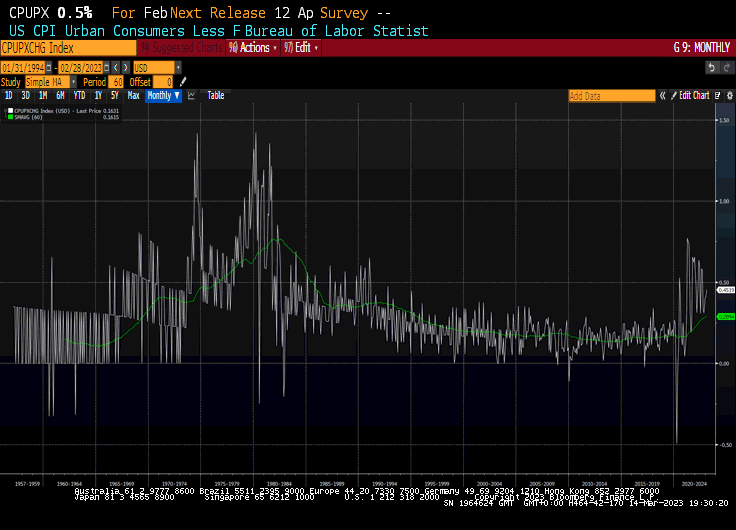 Today’s CPI ex-food and energy figure came in higher than expected. The reason for looking at that slimmed down figure is because it is supposed to be less volatile, but at present it is indicating sticky high inflation.
Today’s CPI ex-food and energy figure came in higher than expected. The reason for looking at that slimmed down figure is because it is supposed to be less volatile, but at present it is indicating sticky high inflation.
That increases the scope for the Fed to follow a similar path to the Bank of England. Following the pension crisis six months ago, unlimited funds were made available to underwater pensions. Once that was done, the BoE continued to raise rates. If they were to follow that path of behaviour, we will have fully fledged banking crisis.
The Fed and Treasury have saved depositors but that does not mean the market-to-market losses of leveraged institutions have evaporated. The next big question is how these same banks will deal with lower commercial property prices and the demise of cashflows from private equity ventures that have long lockups (just like the bond problem) and are invested in interest rate sensitive sectors.
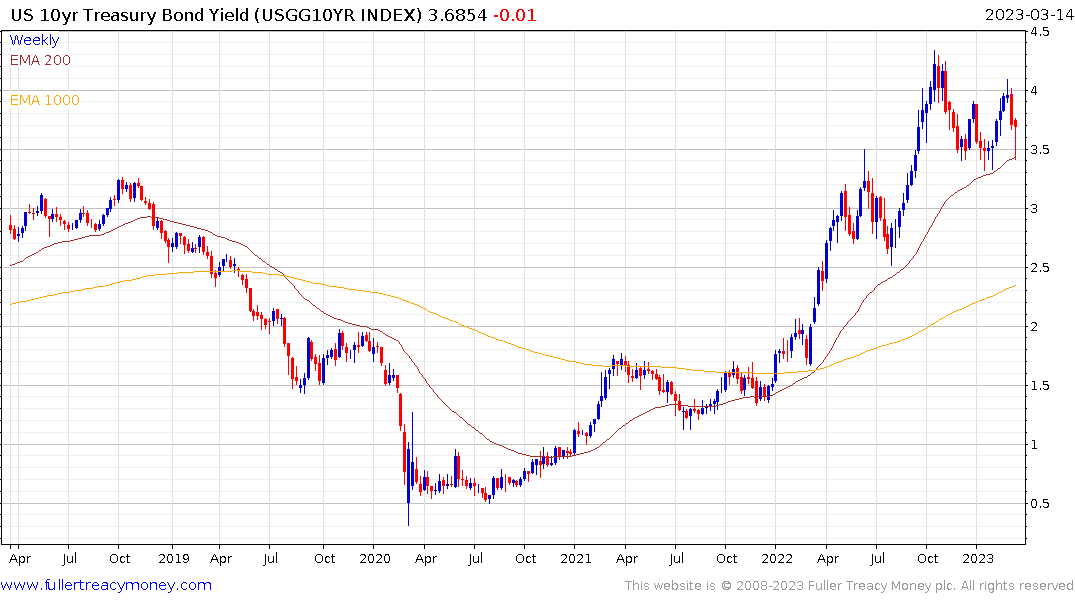
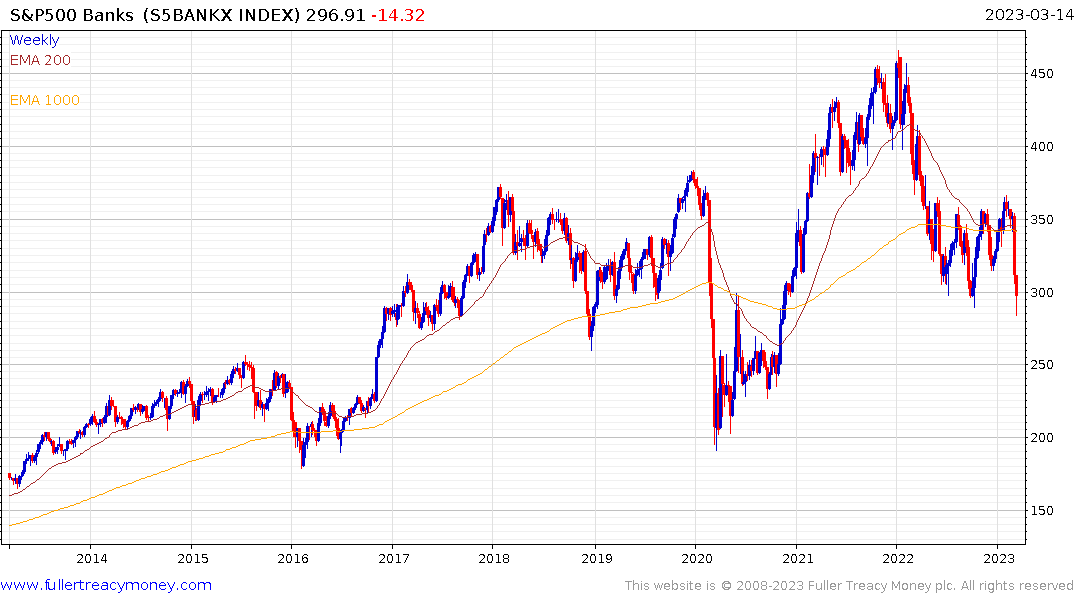
The recovery in bank stocks is contingent on a recovery in Treasuries as a result. 10-year yields firmed today from the 3.5% level and the rebound in the S&P500 Banks Index failed to hold the intraday high.
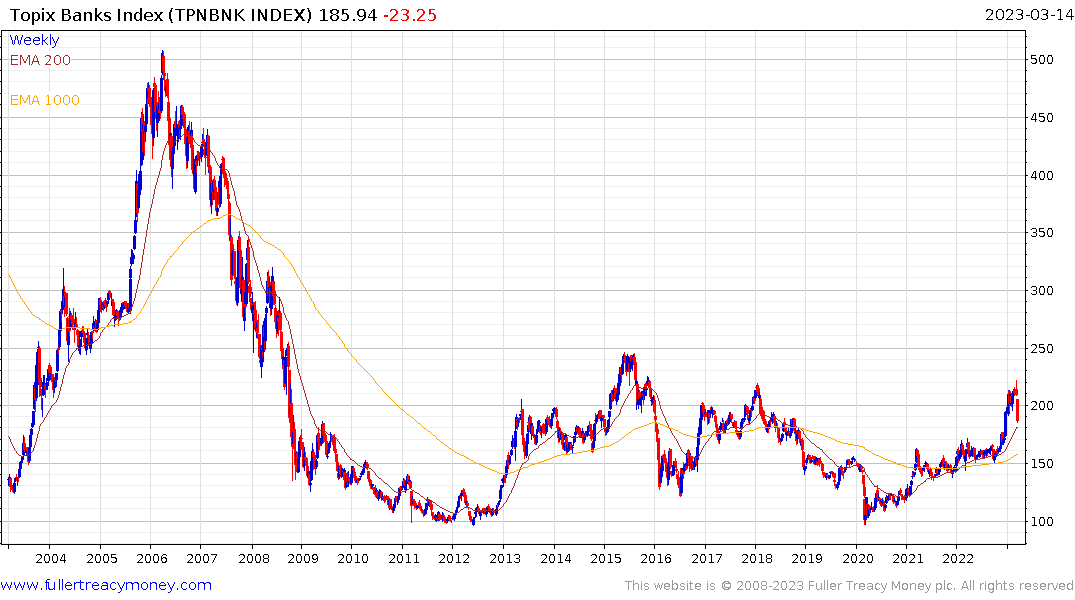 The wider global banking sector is also experiencing contagion. The Topix Banks Index pulled back sharply from the lower side of the decade-long range this week to confirm resistance.
The wider global banking sector is also experiencing contagion. The Topix Banks Index pulled back sharply from the lower side of the decade-long range this week to confirm resistance.
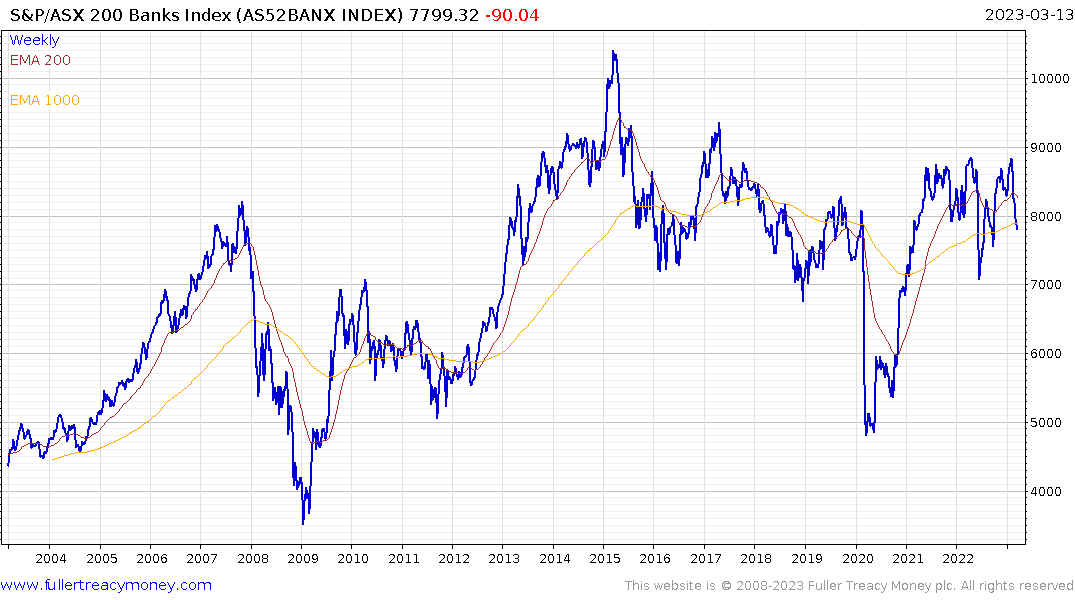
The S&P/ASX 300 Banks Index dropped down through the 1000-day MA this week.
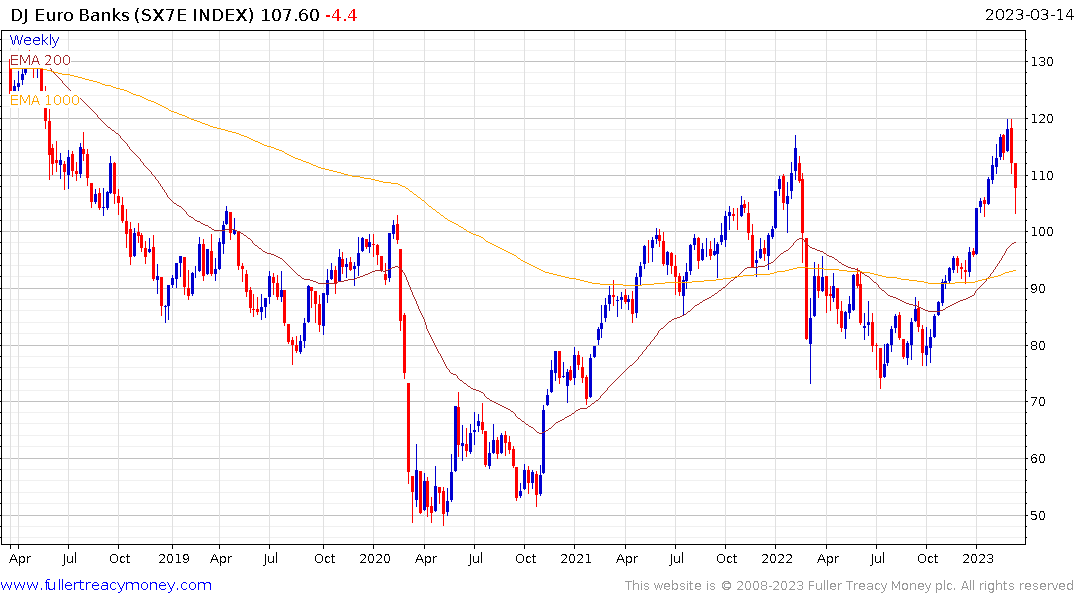 The Euro STOXX Banks Index held its rebound today. The European banking sector’s biggest redeeming quality is they have been shy about making loans since the sovereign wealth crisis. However, they are still sitting on massive market to market losses on bonds that used to have negative yields.
The Euro STOXX Banks Index held its rebound today. The European banking sector’s biggest redeeming quality is they have been shy about making loans since the sovereign wealth crisis. However, they are still sitting on massive market to market losses on bonds that used to have negative yields.
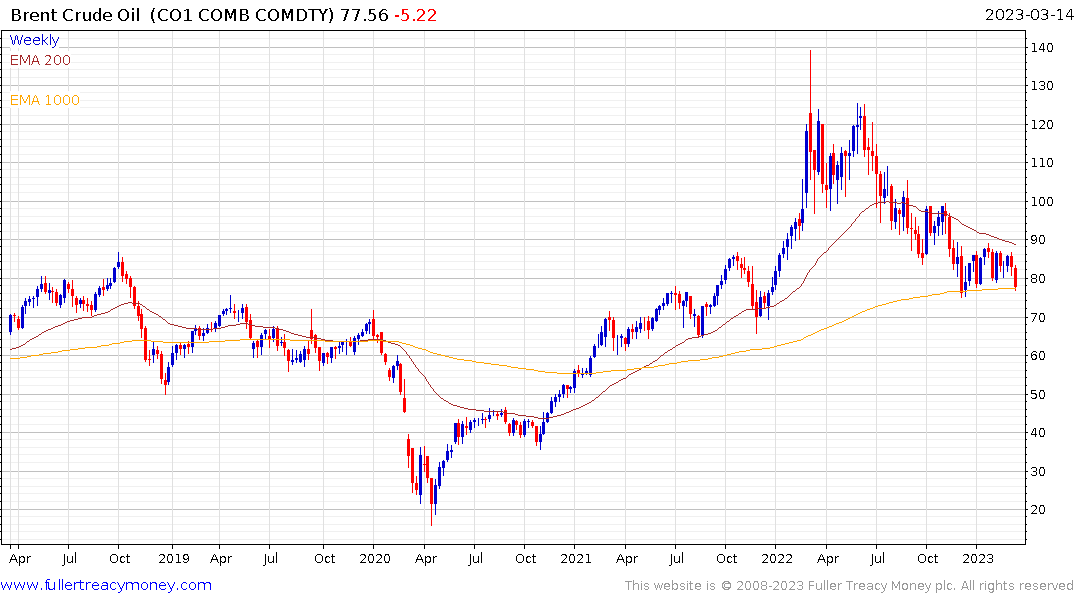 Credit Suisse is the most obvious symptom of this brewing problem, and it continues to trend lower. The fact it is a global money centre bank should give the entire global banking sector pause.
Credit Suisse is the most obvious symptom of this brewing problem, and it continues to trend lower. The fact it is a global money centre bank should give the entire global banking sector pause.


